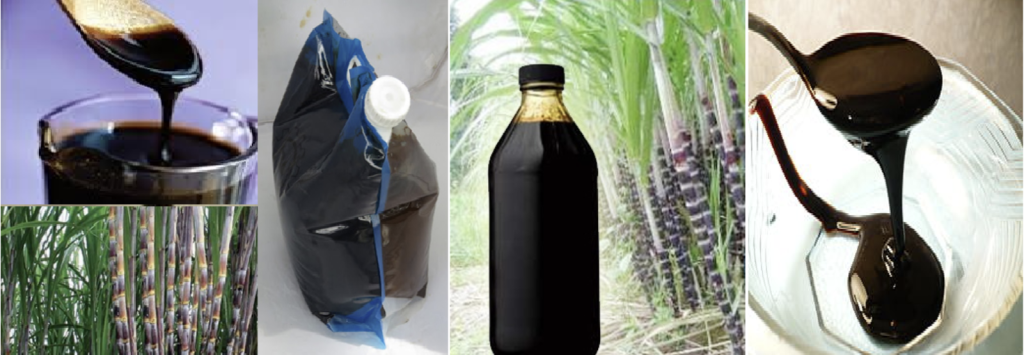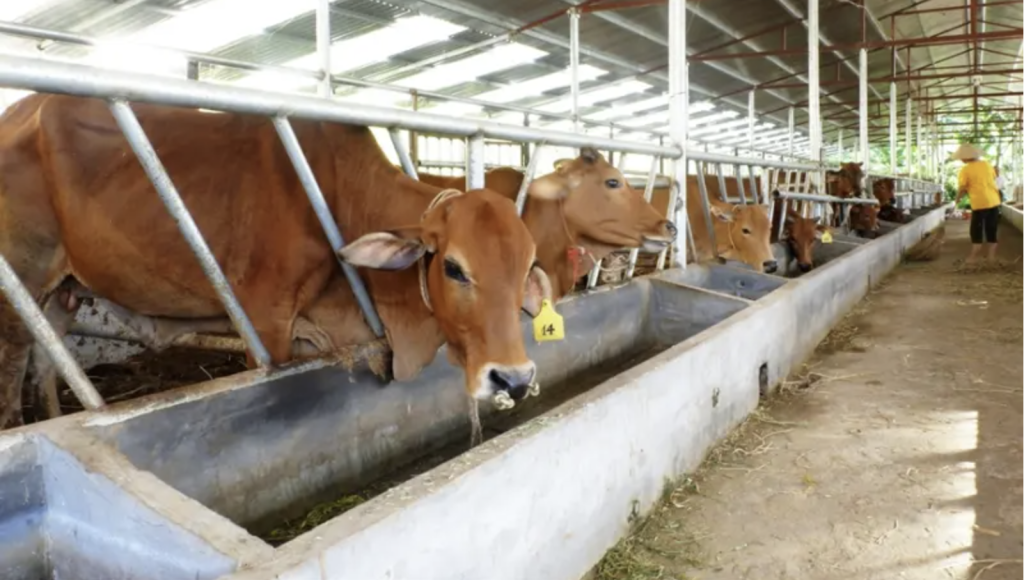1.What is molasses?
Molasses, also known as molasses, is a by-product obtained during the production of cane sugar. Although this jet black liquid is not used directly like sugar, it contains countless great potentials in many fields. As an abundant and cheap raw material source, molasses is widely used in many industries, bringing economic value and practical benefits to life.
Table of Contents

2. Ingredients
Depending on the sugarcane variety, weather, soil characteristics, sugarcane harvesting stage and the production process of each factory, each type of it will have characteristics in terms of nutritional composition, color, taste and consistency. different lubricants. The standard ingredients in molasses are divided into 3 parts, which are sugar, organic matter and minerals.
a) Sugar
Soluble carbohydrates (double sugars and simple sugars, mainly sucrose) are the main nutritional components in molasses. Compared to sugarcane, the total sugar content in sugar beet molasses is usually lower but contains almost all sucrose.
b) Organic substances are not sugar
The physical properties, especially the viscosity, of molasses depend on the organic substances other than the sugars of the molasses. They mainly include carbohydrates such as organic acids, starches, and nitrogen-containing compounds.
c) Mineral
Molasses contains a very abundant amount of minerals, especially Na, Mg, K and S. In addition, they also contain a significant amount of trace elements such as Cu, Mn, Fe, Zn,…
3. Method
Specifically, it production process will take place as follows:
– When harvesting sugarcane, people will cut off the leaves, keep the stem and clean it. Then grind or cut into small pieces and squeeze the juice.
– Sugarcane juice will then be boiled until it condenses to form sugar crystals.
– The sugar crystals will be separated into the finished product, cane sugar, and the remaining molasses will continue to be concentrated.
– After about 3 times of concentration, sugar crystals can hardly be produced further by conventional methods. This remaining liquid is molasses.

4. Important applications of molasses
There are 4 commonly used applications it
a) In agriculture
Molasses is added to the soil to increase the biological activity of the soil. It is also used in hydroponic crop production to provide nutrients to plants. In addition, molasses is also used as a food source in microbial cultures, making banana eggs and milk, making GE biological enzymes, etc. Its the most common application in the agricultural industry is composting. organic and microbiologically grown.

b) In animal husbandry
The application of it in livestock is quite diverse, including mixing directly into food, composting byproducts, mixing into water or using as an ingredient in animal feed production. Thanks to its versatility and efficiency, it is increasingly widely used, contributing to improving livestock efficiency and optimizing profits for farmers.

c) In industry
In industry, it is used in the following applications:
– Is a carbon source for some industrial production sectors.
– Bleached with magnesium chloride (MgCl2) and used as an anti-icing agent.
– Used in the production of ethyl alcohol used as engine fuel.
– Used as a fermentation agent in wine and beer production.
– Used as raw material in the MSG and food yeast production industry.
– Used to ferment products such as amino acids, citric acid, yeast, widely used in the brick and tile industry.
– Mix it with glue for use in the printing industry.…
d) In wastewater treatment
it has the ability to effectively treat wastewater and shrimp farming water.
– Remove NH3 and NO2:
Using molasses will create carbon and nitrogen, based on the mechanism from heterotrophic bacteria. Serves protein synthesis to eliminate toxic substances in ponds.
– Control pH
For shrimp farmers, always pay special attention to the pH level in the pond environment. Because this is a factor that directly affects the survival rate and development of shrimp. Normally, the appropriate pH ranges from 7.8 – 8.5. If the fluctuations are too high or too low, the shrimp will die.
There are many solutions to stabilize the pH of shrimp ponds. However, currently the most trusted method is the form of raising microorganisms with molasses. By-products have the function of increasing heterotrophic bacteria to compete for the same carbon source with algae.

Please visit my website to read more blogs





